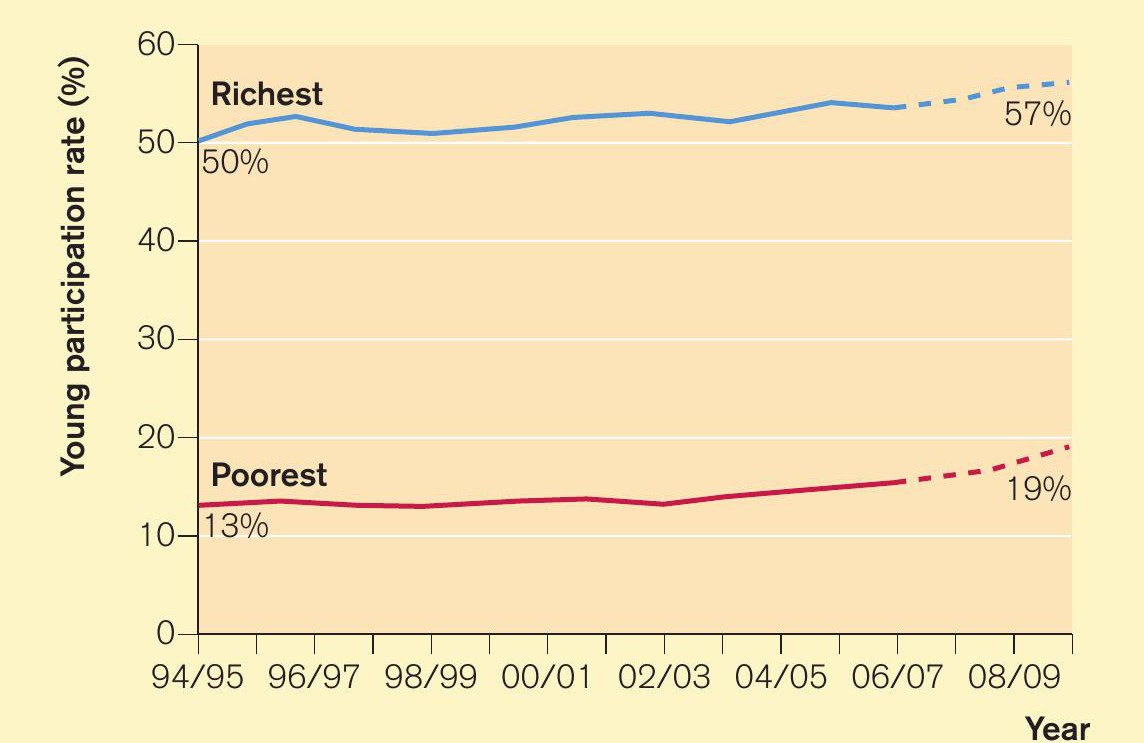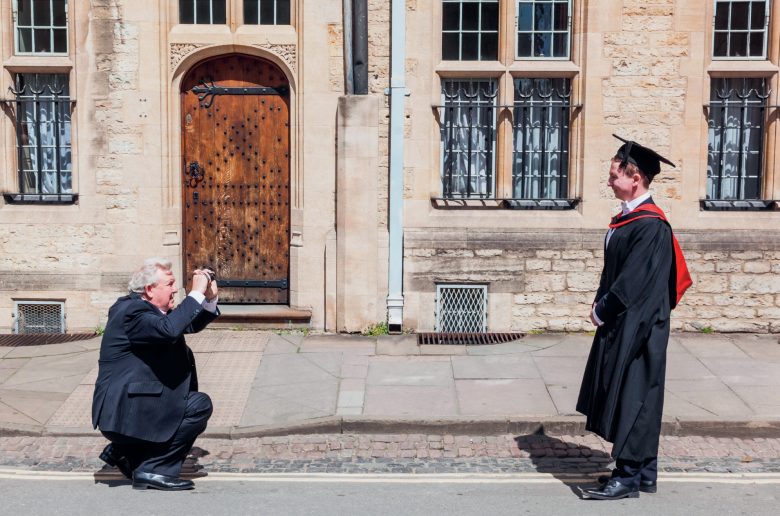
A recent Higher Education Funding Council (HEFC) report on university recruitment shows that there are growing opportunities for young people from the poorest fifth of the population (see Figure 1). They are 30% more likely to go to university today than they were in 2000. Almost one in five (19.2%) of poorer 18–19-year-olds make it into higher education today, compared to only 12.7% in the mid-1990s. But 57.3% of children from the wealthiest homes now go to university — a figure that has also been rising.
These data may promise some long-term prospects of increasing social mobility and an improvement in the economic prospects of some younger people from poorer homes. After all, research by the Organisation for Economic Co-operation and Development (OECD) in 2010 showed that in Britain one’s father having a degree was a much more significant factor in determining one’s own economic prospects than it was in many other countries (see Figure 2). Perhaps these new, young working-class university graduates will, eventually, pass on these apparent advantages to their own children.
Your organisation does not have access to this article.
Sign up today to give your students the edge they need to achieve their best grades with subject expertise
Subscribe




